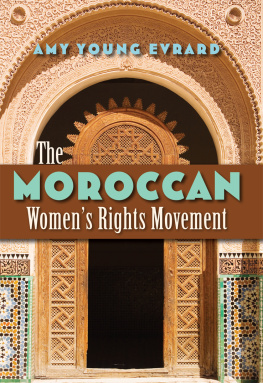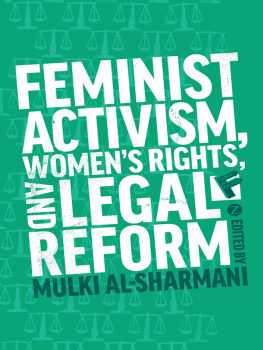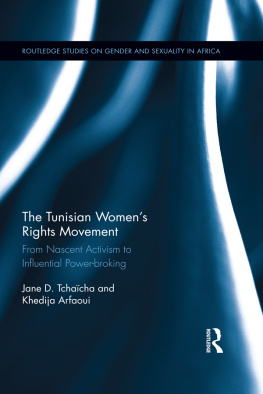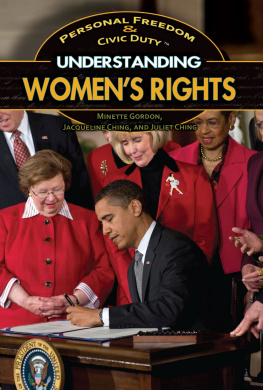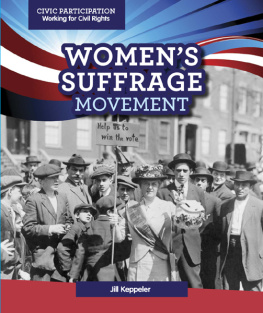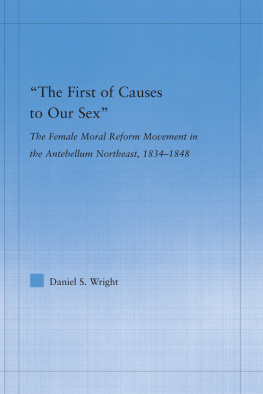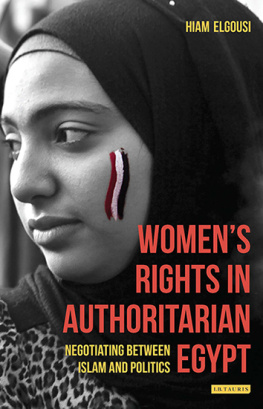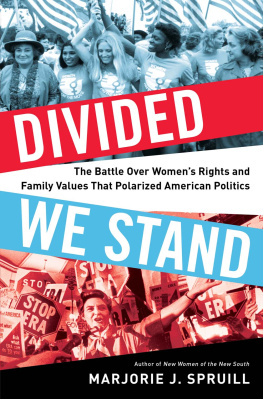Table of Contents
Guide
Page List
ACKNOWLEDGMENTS
I HAVE WORKED on this research project and book for ten years and am grateful to all those who have played a role in the process. The research was completed with support from Harvard University, the Fulbright Institute of International Education, the American Institute for Maghrib Studies (AIMS), the US Department of Education through its Foreign Language and Area Studies (FLAS) grant, and Gettysburg College. The Arabic Language Institute in Fes, the Moroccan-American Commission for Educational and Cultural Exchange (MACECE), and Global Rights provided supportive home bases and guidance for me as I began the research process.
In Morocco, I benefited greatly from friendship and intellectual exchange with Martine Amiot, Komyangi Bilal, Latifa Bouhsini, Susan Schaefer Davis, Souad Eddouada, Khadija Enmili, and Corinne Thierry. I feel immeasurable gratitude to all Moroccans who welcomed me so readily and made Morocco a true home away from home, especially the individuals who were the subjects of my research. You taught me a great deal about Morocco, about womens rights, and about myself. I regret that I cannot thank you by name, as I made a decision to conceal individual identities, but I hope you can feel the love and respect for all of you that I put into this book.
My writing process has been helped immensely during and since the dissertation phase by the keen eyes and sharp minds of those who have read and provided feedback and encouragement, including Diana Allan, Jenny Anderson, Lisa Bernasek, Steve Caton, Aykan Erdemir, Engseng Ho, Ahmed Kanna, Susan Miller, Ramyar Rossoukh, Mary Steedly, and my stalwart cheerleader Lucia Volk. Four anonymous reviewers also provided constructive criticism that greatly improved this manuscript, for which I am grateful. I thank Mary Selden Evans, former editor of Syracuse University Press, for continued support of this project, Deanna McCay for editorial guidance and understanding, Imane El Andaloussi and Niamate Leeper for help with Arabic and French translations, and Megan Sijapati for kindly agreeing to give this a final read through. Numerous colleagues and students at Gettysburg College have also provided the support and encouragement that helped me to complete this project.
Finally, I continue to be grateful beyond words to my family for all their support and love, especially my parents, Harold and Myra Young, and my dear husband Chris Evrard. They will be as happy as I am when they no longer have to ask, is the book finished yet?
Amy Young Evrard is associate professor of Anthropology and teaches in the Middle East and Islamic Studies Program at Gettysburg College. She received her PhD from Harvard University in 2005 and has written several articles on womens rights in Morocco and gender in the Middle East. Her current research interests include Christianity in the Middle East and agriculture in the United States.
| 1 |
CONVINCING WOMEN
SOCIAL MOVEMENTS are a messy affair. There are a variety of motivations that bring people into a movement, and a variety of techniques employed by associations and individuals that are sensitive to these motivations and help to attract potential new members. There are alliances that come together and break apart. There are squabbles and enmities and friendships and sisterhoods and long-term professional relationships within and across associations. Although the primary objectives remain largely constant over time, secondary objectives and tactics shift and are reworked over time. Sometimes this is at the whim of a leader, sometimes as the result of long-term planning and participation of many members, and sometimes because a political opportunity suddenly arises.
There is an obvious need to organize this messiness into analytical categories that allow us to comprehend the shape and boundaries of the movement. The first step is to define what a social movement is, not an easy task given that social movement theorists have been working with and redefining the term for over forty years. The sociologists David Snow and Pamela Oliver sum up this complexity by stating that most conceptualizations include the following elements: change-oriented goals; some degree of organization; some degree of temporal continuity; and some extrainstitutional collective action, or at least a mixture of extrainstitutional (e.g. protesting in the streets) and institutional (e.g. political lobbying) activity (1995, 571). The Moroccan womens rights movement involves a large group of individuals and associations working in a collective and organized way toward a shared set of goals involving Mudawwana reform and education about womens rights. These goals crystallized in the 1980s and will likely continue to be the organizing goals of the movement into the foreseeable future, expressed through protests and other actions as well as lobbying and education efforts.
I explained in the Introduction why this should be categorized as a womens rights movement rather than a womens movement or feminist movement, and how the movement has come to prioritize rights over development in addressing womens issues. Yet questions remain about how these goals have been developed and maintained over the history of the movement, how associations and the movement more generally are organized, and how events and activities are carried out. These questions should be addressed first by looking at the individuals who carry out the work of the movement. How do individuals become part of the womens rights movement, with its collective identity and organization, its shared goals of Mudawwana reform and legal education, its activities and protests and lobbying efforts? This chapter looks at the stories of individuals in order to examine the motivations that have led them to associations and the convincing process that has transformed them into activists whose primary goal is legal reform and education. These individual stories elucidate class and other kinds of hierarchies within the movement that both reflect and reproduce hierarchies present in Moroccan society more generally. They also provide additional explanations of how this became a rights-first movement and how it is connected to the transnational feminist movement.
Convincing Women: The Process of Becoming an Activist
After some weeks of interviews and observation, I noted repeated usage of the word convaincu, meaning convinced or convicted; even conversations in Moroccan Arabic featured the French form of the word. The term describes a person who has undergone a process of moving beyond a personal concern with her own situation to a realization that women share a collective problem requiring a comprehensive solutionspecifically, reform of the Mudawwana. Individuals involved in the movement are then convincing, in an adjectival sense, in that they are well equipped to persuade individual women, the public, and even members of the government of the importance of womens rights. At the same time, convincing as a verb indicates that that they are actively involved in this process of turning individuals into activists for womens rights and educating the public.
This process of becoming convinced can work on individuals no matter what motivates them to contact or join a womens rights association. There are five broad categories of motivation that appear throughout the following narratives of involvement with associations, ranging from the personal to the political along the following spectrum: personal, social, status oriented, cause specific, and political. Each individual comes to an association because of one primary motivation, although this motivation may coexist with others. The process of convincing moves people along the spectrum from the personal toward the political. At some point, a person who has become involved with an association or an event and has some level of interest in one or more issues is transformed into a person convinced of the collective needs of Moroccan women and the womens rights movements singular ability to address these needs through legal reform and education. In other words, an activist is made, not born.

